The Spaniards that arrived in New World found an enormous variety of edible plants that were totally new for the Europeans.
One of these was the ayocotl (Phaseolus vulgaris), which, due to its high protein content and delicious flavor, together with maize had been for millennia the nutritional basis of the Mesoamerican native people.
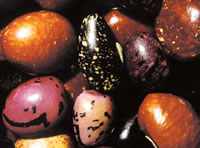
This very Mexican grain was so well received by the Europeans that, with the name of frejol, frijol, frijole, fagioli or judia, it soon invaded kitchens all over the world, becoming an indispensable ingredient for some of the best dishes.
Take a tour in any market in Mexico and… what do you find? Beans. Beans of innumerable colors and shapes, beans of such a diversity that it can surprise you. Black beans and brown beans; red beans and white beans; speckled, pea and canary beans; lima, kidney, black-eye, pinto and cranberry beans; beans which grow on vines, on branches or on the ground. All of these names are based on their color, shape, size or growth pattern.
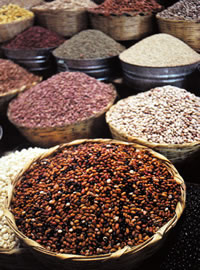
How many varieties of beans are there? Some authors, such as Liberty Bailey on Phaseolus vulgaris, speak of from two to four hundred different varieties, all of them are sold edible, although others -perhaps less enthusiastic- count only twenty improved varieties and about fifty native ones. But whatever the exact number of varieties is (twenty is already enough), the judia, frejol, frijol or common bean is the fundamental legume of the Mexican diet.
There are indications that this plant’s cultivation began in Mexico some seven thousand years ago. It is also a known fact that in more recent times the Aztecs -who demanded payments in kind from the people they conquered – often asked for beans as a tribute. Although the Mendocino Codex does not specify if these were given cooked -refried, charro style or stewed- or simply by sacks.
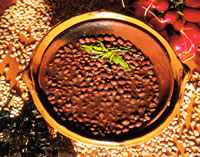
Today, we find beans -in any of their varieties and shapes- in multiple national dishes.
Parados or de la olla, with or without broth, fried or refried (or Chinese because of the amount of oil that they absorb when they are fried), with cheese, Spanish sausage, cream and tortilla chips, or charro style with pork rind and epazote leaves.
Beans are served as a main course or as a humble accompaniment to meat, eggs or even other less Mexican grains, such as in the famous Moors and Christians (moros y cristianos). The name of this last dish, which combines beans with white rice, takes us to the Spanish Peninsula during the time of the Catholic Kings. from where, to our delight, it was introduced to Mexico through the Port of Veracruz.
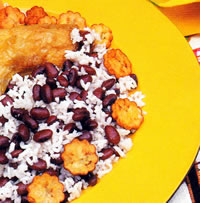
From the same family as lima beans. our native beans are no doubt also related to the magical beans of the fairy tale, those that grew and grew until they reached the clouds. If not, how can one explain that today beans are eaten all over the world? The French cook them in the heart of a cassoule with meat and various vegetables to make their famous winter cassoulet.
Brazilians mix them with meat and rice to prepare their substantial national dish, the feijoada. In the East, they are turned into the sweet filling of delicious loaves of bread, desserts, and candies. In Northern Africa they are prepared with meat, vegetables, and grains: and in North America, they are cooked in a sweet broth, or as one of the main ingredients in their Tex-Mex cuisine’s most famous dish, chili con carne.
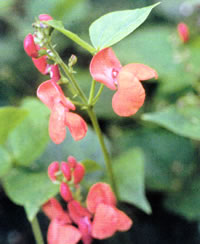
Today, – a marvel of the modern world – beans are also available in the supermarket. They come as dry grains packed in plastic bags, or cooked in different styles and canned. But there is no modern world that can replace the delicious taste of beans cooked, as God ordains, in the traditional way, which is de la olla or stewed in a pot.
The preparation process is long and laborious. On the kitchen table, the same one that is witness to the birth of all kinds of dishes and salsas, the grains come rolling along to submit to the first step of the ritual: the cleaning. The little stones must be removed, dirt blown off, for them to be ready for the pot. From that moment on, say the Not any pot, it has to be understood, can be used to cook beans. Such a Mexican food, with so much history and tradition, does not allow the use of a pressure cooker without making us feel that we are betraying our country.
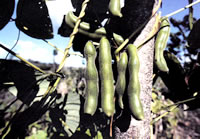
Much less can we open a can, empty the contents into a glass bowl and put them in the microwave to heat, no matter how well we season them with oil or butter to enhance their taste. The pot in which the beans are cooked should be of clay, or they are not frijoles de la olla.
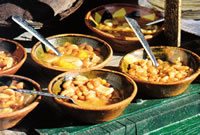
The second step of the ritual is to leave the grains soaking all night in cold water, of course inside the earthenware pot. All night is all night, not just a little while. If they are not left all night, the rebellious Phaseolus vulgaris will remain hard and inedible, which means it will lose all of its qualities. The next day the pot is placed on the stove and the real preparation process, the cooking, begins.
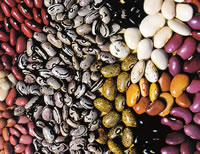
The third step of the ritual is the key to this process: seasoning the beans. It is very important to put the salt midway through the boiling process; not before, not after. If not, they will not turn out well. This said, we start imagining fantastic chemical processes in which the salt’s sodium and chloride react with the beans’ components, among which, given the smell, it is easy to assume there is sulfur. From there, everything else is imagination and personal taste: should we add a bit of onion, a sprig of epazote leaves, a serrano chili, a clove of garlic, a few avocado leaves…
Beyond the strictly culinary, putting the beans on the stove reflects a whole way of being: it means not getting distracted (so the beans don’t burn) and it also means exercising willpower (to avoid taking one or two little tastes).
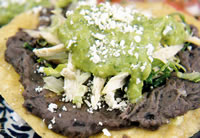
Putting the beans on the stove can also become a continuous process and turn, by mysterious psychological laws, into a very distinct mood. That is why in Mexico we say “we have the beans on the stove “when we have something pending when we are in a hurry when we can’t find enough time to talk to our neighbors, friends or intimates. Or when we just want to cut off a string of gossip that is smothering us. “You know what? I left the beans on the stove and have to hang up. I’ll call you later “Which means, in good Spanish, that our beans are more important than any prattle, no matter how juicy, poisonous or informative it is.
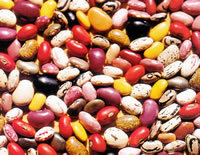
How could beans not be important when they constitute every meal’s culmination, the crown of any feast? Because of course, to complete any daily ration, there is nothing like beans. That is why they are justly called the completers.
Anyway, once the beans are cooked, we can use them, as has been said, to crown our meal. And for that purpose, what better end than an authentic Crown of Beans?
CROWN OF BEANS
INGREDIENTS
- 400 grams of lard or cooking oil
- 3/4 kilo of black beans
- One large onion
- One clove of garlic
- 3 corn tortillas cut into diamond shapes and fried in oil (totopos) 250 grams of tomato
- 150 grams of grated aged cheese
- 3-6 chipotle chili in vinegar
- 150 grams of longaniza (Mexican sausage)
- 150 grams of diced pork
- Sour cream
- Salt and pepper to taste
INSTRUCTIONS
Stuffing
Fry the onion and pork in a little bit of lard or oil and add the tomato, the fried longaniza and the sliced chili. Season with salt and pepper. Beans
The beans are cooked de la olla style, adding the salt, of course, midway through the cooking process. Once cooked, mash them well and fry them in lard or oil. Add half of the grated cheese to this mixture and fry it well.
Place part of this paste on the bottom of a crown-shaped pan. Add the stuffing and cover with the rest of the bean mixture. Place the pan in the oven and bake for 15 minutes. Serve on a large ceramic platter and decorate with the sour cream, the remaining cheese, and the fried corn totopos.
Enjoy!
Last Updated on 21/02/2021 by Puerto Vallarta Net




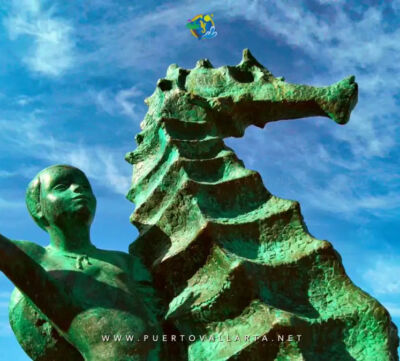


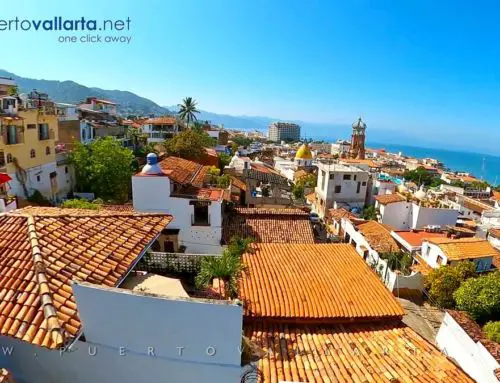

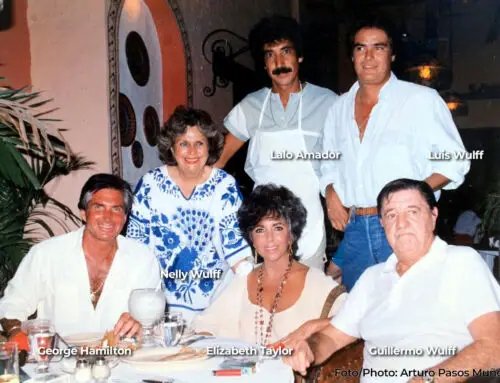
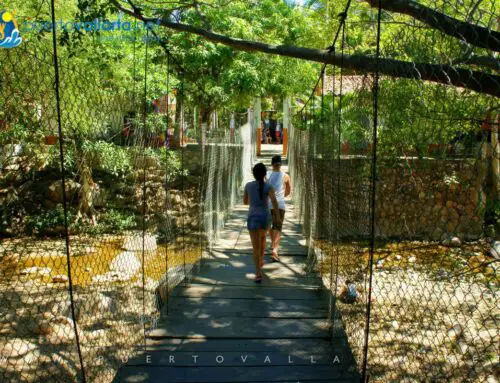
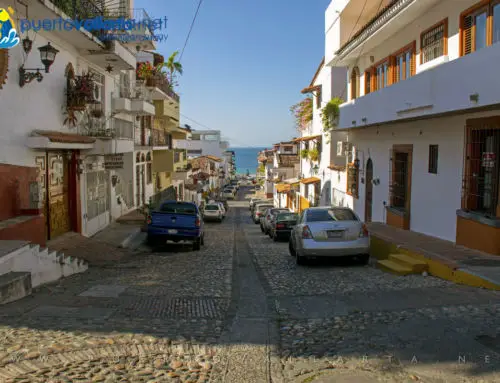
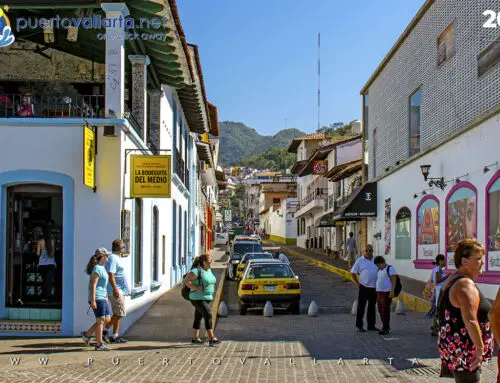

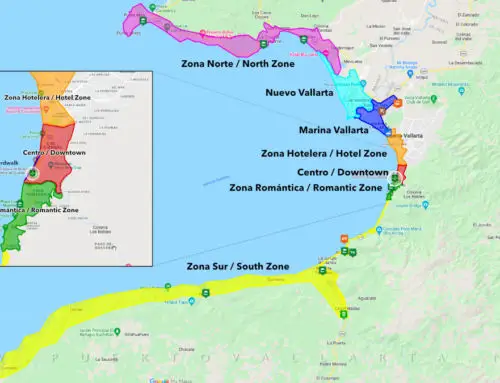
Leave A Comment